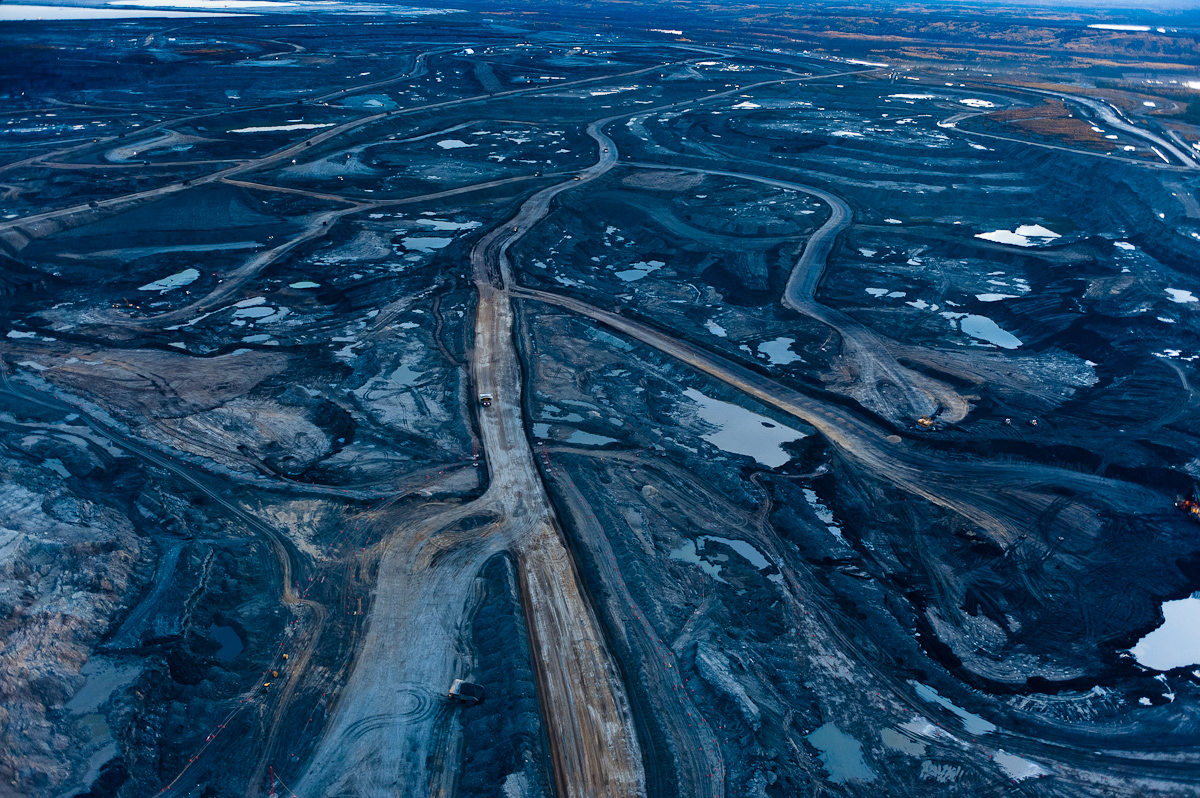
The State Department has finished its 11-volume environmental review of the controversial Keystone XL pipeline, which would carry oil from the tar sands of Alberta, Canada, down to Steele City, Nebraska and eventually the Gulf Coast.

(The Washington Post)
The big headline: The report concludes that blocking or approving the northern leg of the Keystone XL pipeline would not have a "significant" impact on overall greenhouse-gas emissions and future tar-sands expansions. That's because, it says, most of Alberta's oil will likely find a way to get to the market anyway — if not by pipeline, then by rail.
More specifically: The 830,000 barrels of tar sands oil that the pipeline would transport each day down to the Gulf Coast would produce extra greenhouse gases compared to regular oil — an extra 1.3 million to 27.4 million metric tons of carbon dioxide per year. (That's like putting an extra 250,000 to 5 million cars on the road.) That's a lot. But the key question is how much of that oil would get produced and burned anyway. And the State Department believes most of it will get produced regardless.
"[A]pproval or denial of any one crude oil transport project, including the proposed Project, remains unlikely to significantly impact the rate of extraction in the oil sands, or the continued demand for heavy crude oil at refineries in the U.S.," the report says.
Now, this report is not a final approval of Transcanada's $5.4 billion pipeline. Think of it as the start of a lobbying frenzy. The State Department will now open a 30-day comment period. And other federal agencies have 90 days to weigh in with their own considerations. Then President Obama will determine whether the pipeline is in America's national interest or not. (The federal government gets a veto here because the pipeline crosses international borders.)

But today's report is a major step in the process. Here are four key takeaways:
1) Oil from Alberta's tar sands produces 17 percent more greenhouse-gas emissions over its life-cycle than regular oil. Crude from Alberta’s oil sands is heavier, more viscous, and contains more impurities than other types of oil. So it takes more energy to extract and process.
When you consider that entire life cycle — from digging the stuff out of the ground to burning it in your tank — using oil from tar sands leads to 17 percent more greenhouse-gas emissions than using the average barrel of oil refined in the United States. (Although tar sands oil is only 2 to 10 percent dirtier than the heavy crude oil used in many Gulf Coast refineries, which is what it would mainly displace.)
That means that producing tar sands oil would increase overall greenhouse-gas emissions and worsen global warming. The harder question, then, is whether the Keystone XL pipeline itself is crucial to that production...
2) The State Department thinks blocking the Keystone XL pipeline would have only a small impact on tar-sands production and climate change. If Canada can't find an outlet for its oil, there will be less production. So what happens if Keystone XL gets blocked? Here the State Department seems pretty confident that the oil will find its way to market anyway — especially by rail.
 "While short-term physical transportation constraints introduce uncertainty to industry outlooks over the next decade, new data and analysis... indicate that rail will likely be able to accommodate new production if new pipelines are delayed or not constructed," the report says. (Here'sthe longer version (pdf) of this analysis. And here's an earlier post detailing that argument.)
"While short-term physical transportation constraints introduce uncertainty to industry outlooks over the next decade, new data and analysis... indicate that rail will likely be able to accommodate new production if new pipelines are delayed or not constructed," the report says. (Here'sthe longer version (pdf) of this analysis. And here's an earlier post detailing that argument.)
The report also adds that, if the pipeline gets blocked and producers are forced to ship by truck and rail instead, overall transportation emissions could well even increaseby 28 to 42 percent. That's because there would be more trains burning diesel fuel and more rail terminals using electricity.
3) A pipeline spill is "unlikely" to affect the key Ogallala Aquifer. The Ogallala Aquifer in the Midwest is one of the key freshwater sources for the Great Plains. So there's plenty of justifiable worry about running the Keystone pipeline through this area, given the potential for leaks.
But the State Department's report doesn't seem overly concerned about this: "Modeling indicates that aquifer characteristics would inhibit the spread of released oil, and impacts from a release on water quality would be limited." There are, however, some 39 public wells within the vicinity of a one-mile stretch in Nebraska that could potentially be affected by spills.
4) The Keystone XL project, if built, would support 42,000 jobs over its two-year construction period. "During construction, proposed Project spending would support approximately 42,100 jobs (direct, indirect, and induced), and approximately $2 billion in earnings throughout the United States." Of those, about 3,900 would be direct construction jobs, most of them temporary.
Further reading:
--Here's a good in-depth piece by the New Yorker's Ryan Lizza on President Obama and the Keystone Pipeline.

No comments:
Post a Comment